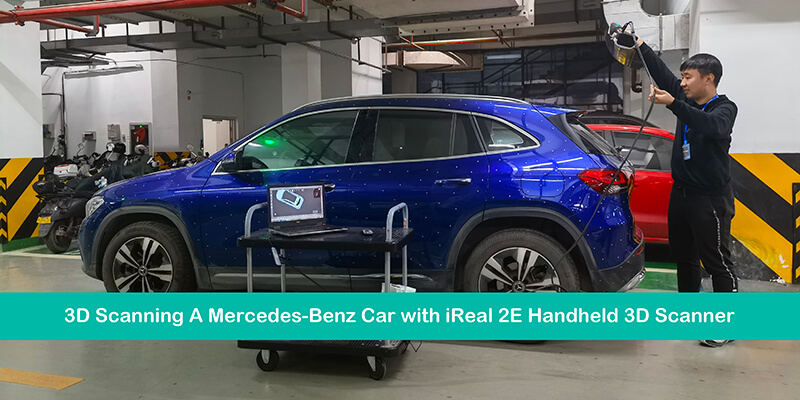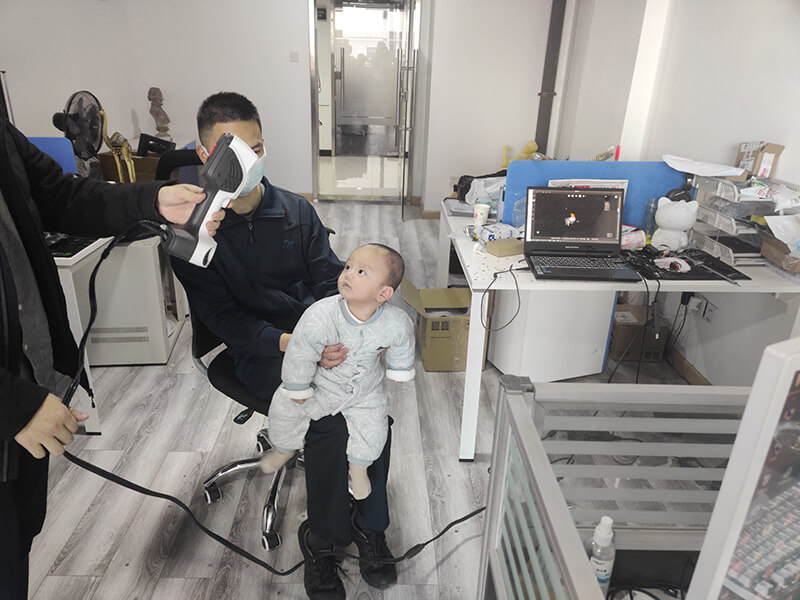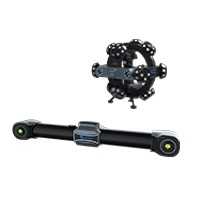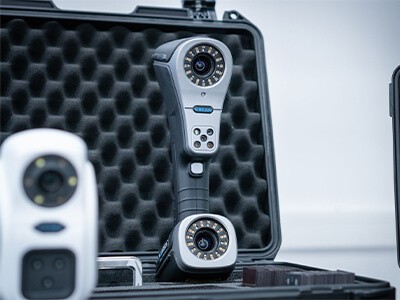As the markets of 3D printing, metaverse, and 3D display expand, the demand for 3D models is growing fast. High-tech 3D scanning, an important source of creating 3D models, is becoming more popular among enterprises, schools, scientific institutions, 3D designers and 3D printing engineers.
It is because these professional 3D scanners are easy-to-use and cost-effective, with their prices ranging from $1,000 to $12,000. Additionally, they can deliver scanning results with decent accuracy and precision that can meet the requirements of data acquisition in most cases.
So, what factors should be considered in choosing a professional handheld 3D scanner?
In this article, we will talk about five factors, namely, price, objects to be scanned, environmental adaptability, material adaptability, and ease of use. We will also evaluate iReal 2E in a five-star rating system from these five aspects.
- Price
It is important to choose a 3D scanner with a high cost-performance ratio within your budget. Professional 3D scanners generally fall into two categories, desktop and handheld devices.
Desktop scanners are suitable for 3D scanning objects in a size range of 10-40 cm. Due to their limitations in measurement range, we will not discuss this kind of 3D scanner here.
| Table 1: Price Range of Different Types of 3D Scanners | |||
| Consumer-grade Handheld 3D Scanner | Desktop Raster 3D Scanner | Professional Handheld Color 3D Scanner | |
| Price Range | $300-600 | ≥$1,000 | $4,000-12,000 |
| Suitable for | Individual tasks with no strict requirements for accuracy and precision. | Art & design objects with sizes ranging from 0.1 m to 0.4 m. | Art & design objects with sizes ranging from 0.2 m to 5 m, and industrial design objects with accuracy requirements around 0.3 mm/m. |
Notes: The Ex-factory price of 3980$ does not include freight, VAT, tariff, etc. iReal 3D reserves the right of final interpretation.
iReal 2E: ✬✬✬✬✬
iReal 2E, one of the representative products of professional handheld 3D scanners, features a high scanning precision (basic accuracy up to 0.1 mm and alignment accuracy up to 0.3 mm/m) and a resolution up to 0.2 mm.
It’s equipped with standard HD color scanning modules that can meet most requirements for scanning medium and large-sized objects and the human body.
iReal 2E, with a price of 3,980 dollars, stands out among its competitors (most of them range from $4,980 to $8,000).
- Objectsto Be Scanned
The design inspirations of 3D designers are diverse. Therefore, a scanner, which can be used for a wide range of applications, can help them to achieve their design intent better.
iReal 2E: ✬✬✬✬
- Hybrid Alignment Modes
iReal 2E offers powerful alignment abilities, supporting four different alignment modes: feature, texture, marker, and mixed.
The features alignment mode can be used for scanning sculptures with rich geometric features or scanning human body.
Texture mode is suitable for plane surfaces like walls, while markers mode can be used to scan a whole car or a set of castings. For objects with a number of diverse textures and features, the mixed mode can be used.
- Size Range of the Objects to Be Scanned
The minimum point distance of iReal 2E is 0.2mm (the smaller the point distance is, the finer the 3D model will be). Its ideal size range for the objects to be scanned ranges is between 0.3 and 4 meters. It is also capable of 3D scanning smaller objects between 0.1 and 0.3 meters if the requirements on precision aren’t very high.
By setting the resolution at 1.0 mm or higher, users can capture data of objects larger than 4 meters. The task can be fulfilled when the user’s computer configuration is good (64GB/128GB of RAM) and the requirements for details and precision aren’t high.
An Engineer from Scantech has 3D scanned a Mercedes-Benz GLA SUV (approximately 4.3 meters long and 1.7 meters wide) in the marker alignment mode. The global accuracy for the car scanning is about ±1 mm.
iReal 2E is fully capable of scanning large and medium-sized objects. The 3D data captured can be applied in game digital assets, 3D display, virtual simulation, etc.
- For Both Art and Industrial Design
One of the biggest advantages of professional 3D scanners is that they can align scans by features instead of makers.
This kind of 3D scanner is mainly used in the data acquisition of sculptures, artworks, body parts, and portraits. These applications are more in line with the needs of 3D designers.
When 3D engineers engage in reverse engineering, virtual simulation, and game asset creation of industrial products, they require a relatively high level of detail and precision.
iReal 2E offers quasi-industrial accuracy, good data restoration ability, and marker alignment mode.
It is capable of meeting the requirements for designing industrial products such as castings, bathroom products, and automobile repacking under limited budgets.
Note: Laser scanners from Scantech are recommended if you have strict needs for size accuracy, curved surface precision, and accuracy consistency.
- Environmental Adaptability
The environmental conditions in different 3D scanning tasks vary. A 3D scanner with a strong ability to adapt to different environmental conditions allows designers to obtain data anytime and anywhere.
iReal 2E: ✬✬✬✬✬
Engineered with infrared VCSEL structured light technology, iReal 2E boasts great adaptability for different light conditions.
It is capable of successfully capturing 3D data in a luminous indoor setting, under direct sunlight outdoors, or in a bright or dark environment.
- Material Adaptability
Handheld 3D scanners generally can capture data of matt and light-colored surfaces (because the projected light diffuses well).
These scanners generally have trouble capturing surfaces that are transparent (because the projected light penetrates the surface), reflective (because the light reflects off the surface), or very dark surfaces (because the light is absorbed).
Different types of 3D scanners have different material adaptability. For those 3D scanners with poor material adaptability, spray powder is often required to obtain better point cloud data.
iReal 2E: ✬✬✬✬
iReal 2E adopts linear-array structured light technology to gain better material adaptability to scan more items without powder and creatively solve the difficulty of hair scanning.




















